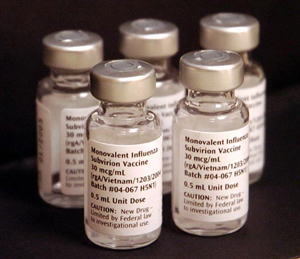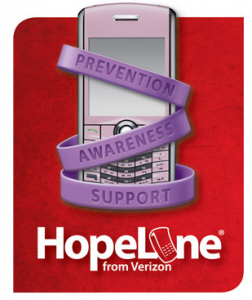 Do hormone levels in postmenopausal women affect cognitive function? New research sheds light on the postmenopausal brain.
Do hormone levels in postmenopausal women affect cognitive function? New research sheds light on the postmenopausal brain.
In a recently published study, researchers found that estrogen levels after menopause may have no impact on cognitive skills, but progesterone levels might. Progesterone had some association with global cognition and verbal memory among newly postmenopausal women.
643 healthy postmenopausal women were part of the study, ranging from 41 to 84 years old. Neuropsychological tests were done to assess cognition and memory, and hormone levels were determined including estradiol, estrone, progesterone, and testosterone. The findings showed no association between estrogen and cognitive skills. However, women with higher levels of progesterone had better outcomes on the verbal memory and global cognition tests, particularly in those who had started menopause less than six years prior. None of the hormones appeared to have any association with depression or mood either.
More research must be done to confirm the new findings regarding progesterone levels. Also, there is no way to directly measure hormone concentrations at the brain level, but this research implies that estrogen therapy may not have a significant effect on cognitive skills. To learn more about when hormone therapy is beneficial , visit Northwestern's menopause website here.
Source reference: Henderson VW, et al "Cognition, mood, and physiological concentrations of sex hormones in the early and late menopause" PNAS 2013; DOI: 10.1073/pnas.1312353110.

 New research shows that women with high blood pressure during pregnancy may be at higher risk of having troublesome menopausal symptoms in the future. A research study from the Netherlands examined the relationship between hypertensive diseases and hot flashes and night sweats.
New research shows that women with high blood pressure during pregnancy may be at higher risk of having troublesome menopausal symptoms in the future. A research study from the Netherlands examined the relationship between hypertensive diseases and hot flashes and night sweats. Women undergoing menopause experience symptoms including hot flashes, sleeplessness, depression, joint pain, and poor concentration, to name a few. Hormone therapy has proven to improve some of these symptoms in menopausal women, but new research shows that treatment may only improve quality of life in those who undergo a significant number of hot flashes.
Women undergoing menopause experience symptoms including hot flashes, sleeplessness, depression, joint pain, and poor concentration, to name a few. Hormone therapy has proven to improve some of these symptoms in menopausal women, but new research shows that treatment may only improve quality of life in those who undergo a significant number of hot flashes. As enrollment statistics in the new health insurance marketplaces start to become available, there is a growing focus on whether the enrollment of so-called “young invincibles” will be sufficient to keep insurance markets stable according to the Kaiser Family Foundation excerpted below.
As enrollment statistics in the new health insurance marketplaces start to become available, there is a growing focus on whether the enrollment of so-called “young invincibles” will be sufficient to keep insurance markets stable according to the Kaiser Family Foundation excerpted below. We all know that eating sweet and starchy foods is not the best for our health: but did you know that these foods have been found to increase a woman’s risk of endometrial cancer? Endometrial cancer begins in the uterus and, if it progresses, can lead to a hysterectomy, or even death. Dr. Bandera, of Rutgers University, found that foods containing refined sugar or white flour (found in sweet and starchy foods) can increase one’s glycemic load, which can greatly increase one’s risk for endometrial cancer. The American Institute for Cancer Research (AICR) estimated that 59% of endometrial cancer cases could be prevented in the United States if women exercise for at least 30 minutes daily and maintained a healthy body weight. Estrogen is a known cause for endometrial cancer, and as fat cells secrete estrogen, obesity has been shown as a major cause of this cancer.
We all know that eating sweet and starchy foods is not the best for our health: but did you know that these foods have been found to increase a woman’s risk of endometrial cancer? Endometrial cancer begins in the uterus and, if it progresses, can lead to a hysterectomy, or even death. Dr. Bandera, of Rutgers University, found that foods containing refined sugar or white flour (found in sweet and starchy foods) can increase one’s glycemic load, which can greatly increase one’s risk for endometrial cancer. The American Institute for Cancer Research (AICR) estimated that 59% of endometrial cancer cases could be prevented in the United States if women exercise for at least 30 minutes daily and maintained a healthy body weight. Estrogen is a known cause for endometrial cancer, and as fat cells secrete estrogen, obesity has been shown as a major cause of this cancer. Concerns about hormone therapy safety have made many women turn to alternatives, such as phytoestrogens (soy, flaxseed, etc) to alleviate their menopausal symptoms. A recent systematic review of flaxseed intervention was recently done and reported in the journal Menopause. Their findings: "Flaxseed is currently not indicated for the alleviation of vasomotor symptoms in postmenopausal women, and there is little evidence to support an effect on circulating sex hormones. A paucity of appropriate randomized controlled studies indicates that the effects of flax intervention on BMD are inconclusive."
Concerns about hormone therapy safety have made many women turn to alternatives, such as phytoestrogens (soy, flaxseed, etc) to alleviate their menopausal symptoms. A recent systematic review of flaxseed intervention was recently done and reported in the journal Menopause. Their findings: "Flaxseed is currently not indicated for the alleviation of vasomotor symptoms in postmenopausal women, and there is little evidence to support an effect on circulating sex hormones. A paucity of appropriate randomized controlled studies indicates that the effects of flax intervention on BMD are inconclusive." About 50% of pregnancies in the U.S. are unintended and are higher among adolescents and young women, minorities and women with less educational and financial resources. Thus strategies to prevent unintended pregnancies include assisting women at risk in choosing appropriate contraceptive methods and helping women use those methods properly and consistently. A new
About 50% of pregnancies in the U.S. are unintended and are higher among adolescents and young women, minorities and women with less educational and financial resources. Thus strategies to prevent unintended pregnancies include assisting women at risk in choosing appropriate contraceptive methods and helping women use those methods properly and consistently. A new  Polio, or poliomyelitis, has been nearly eradicated by the polio vaccines developed in the 1950’s, sparing countless children and adults from symptoms such as muscle weakness and acute flaccid paralysis. However, there are still three countries (Nigeria, Pakistan, and Afghanistan) that have never been polio-free. These countries are starting to serve as “exporters” of the polio virus, affecting China and Syria, countries that had previously been polio-free.
Polio, or poliomyelitis, has been nearly eradicated by the polio vaccines developed in the 1950’s, sparing countless children and adults from symptoms such as muscle weakness and acute flaccid paralysis. However, there are still three countries (Nigeria, Pakistan, and Afghanistan) that have never been polio-free. These countries are starting to serve as “exporters” of the polio virus, affecting China and Syria, countries that had previously been polio-free. The Supreme Court on Tuesday, November 26, agreed to hear cases on whether corporations may refuse to provide insurance coverage for contraception to their workers based on the religious beliefs of the corporations’ owners. President Obama’s health care law has exempted many religious groups from the law but did not exempt for-profit corporations because of owners' religious objections.
The Supreme Court on Tuesday, November 26, agreed to hear cases on whether corporations may refuse to provide insurance coverage for contraception to their workers based on the religious beliefs of the corporations’ owners. President Obama’s health care law has exempted many religious groups from the law but did not exempt for-profit corporations because of owners' religious objections.